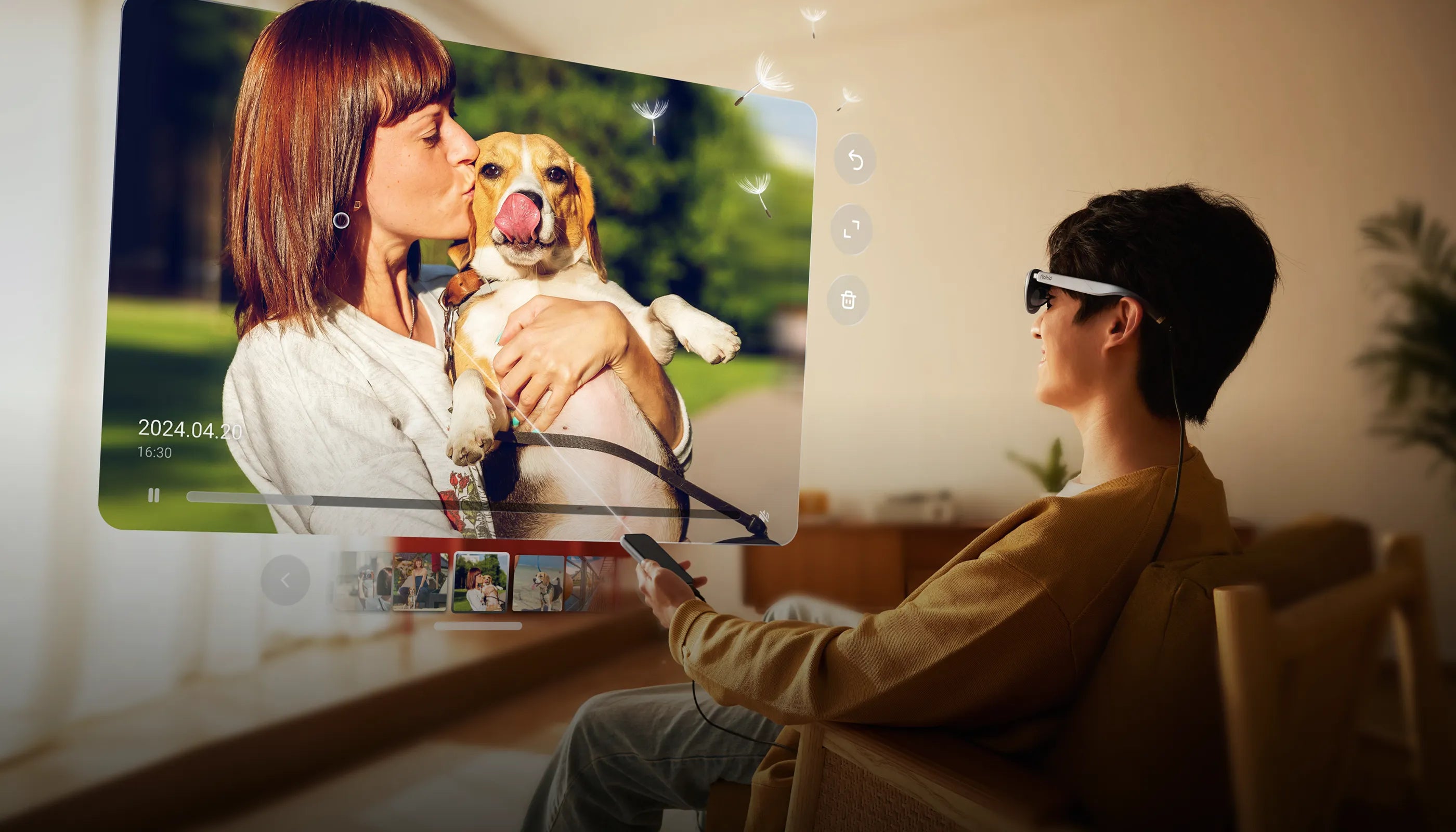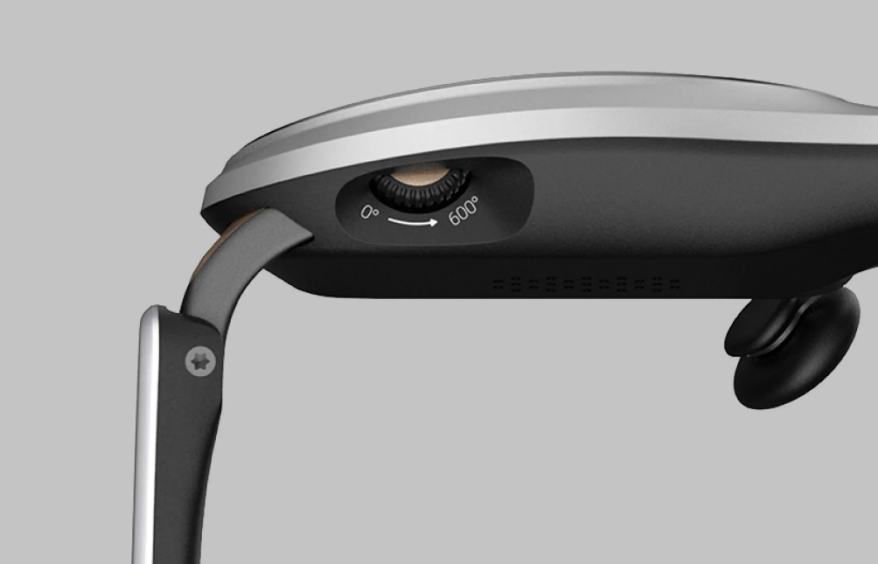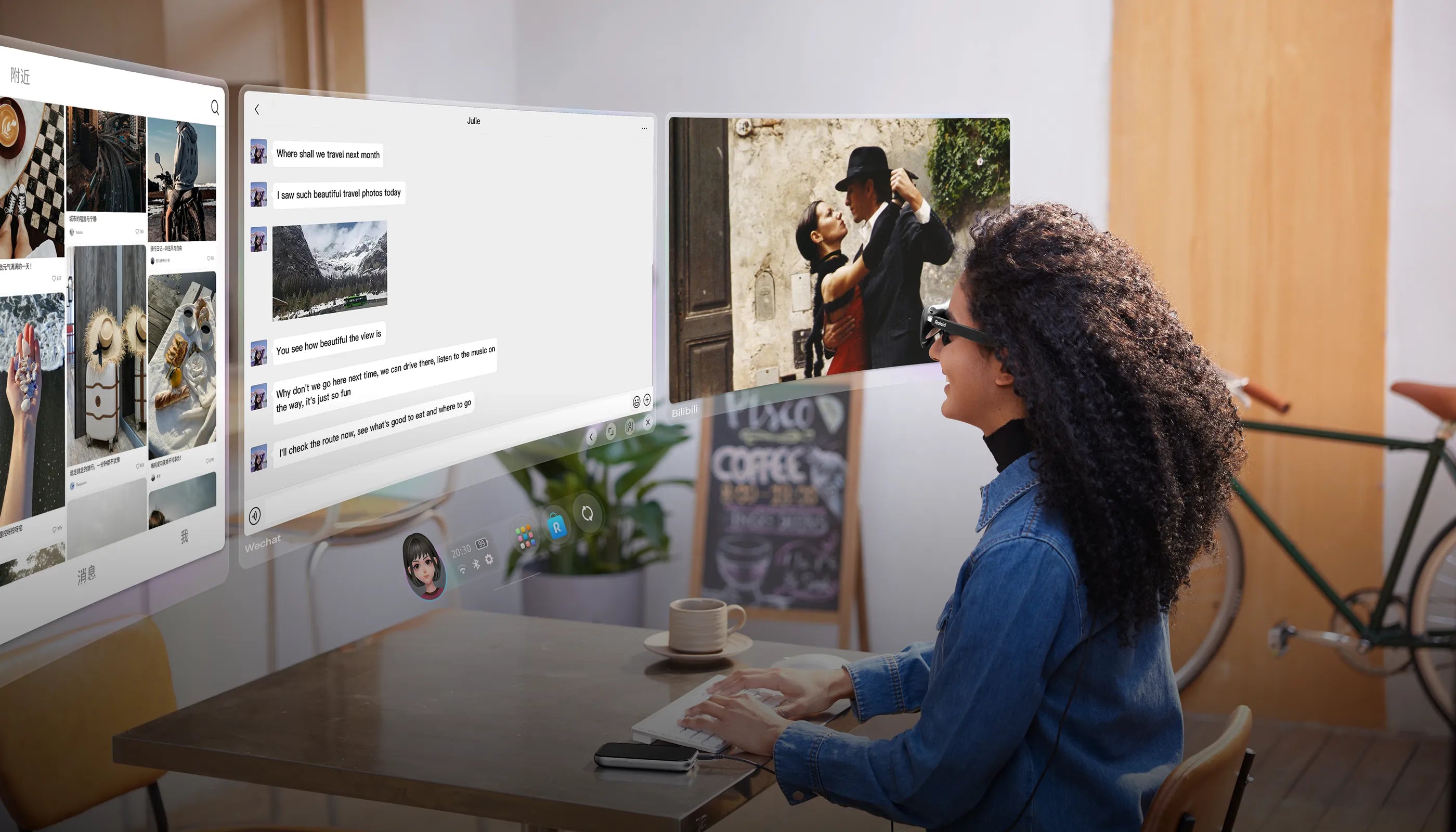
Introduction to Video Display Glasses
Imagine a world where your digital content is seamlessly integrated into your visual field, offering an immersive experience unlike any other. This is the realm of video display glasses, a cutting-edge technology that's reshaping our interaction with digital media. From gaming to professional training, these glasses are not just a futuristic concept but a present reality, offering a glimpse into an exciting new era of technological innovation.

Overview of the Technology
At their core, video display glasses are a marvel of engineering, blending optics, electronics, and software to create a unique visual experience. Their evolution from bulky headsets to sleek, wearable accessories mirrors the rapid advancement in technology over recent years. They offer a tantalizing peek into a future where the digital and physical worlds converge seamlessly.
How Video Display Glasses Work
The basic principle behind video display glasses is straightforward yet ingenious. They use miniature displays, lenses, and mirrors to project images directly into the user's eyes, creating the illusion of viewing a large screen at a distance. This technology, evolving with each passing day, is what makes these glasses not just a gadget, but a gateway to a new dimension of media consumption.
Advancements in Video Display Glasses
Recent technological breakthroughs have significantly enhanced the capabilities of video display glasses. We're now witnessing the emergence of AR glasses like Rokid's AR glasses, which blend virtual images with the real world, offering an enriched, interactive experience. The potential applications of these advancements are boundless, promising a future where our digital interactions are more natural and integrated into our daily lives.
Uses and Applications of Video Display Glasses
The applications of video display glasses extend far beyond entertainment and gaming. They're finding their place in professional settings, offering innovative solutions for training and education. With these glasses, learning and working environments are transformed, offering interactive, immersive experiences that enhance understanding and engagement.
Design and Aesthetics
When it comes to design, comfort, and style are paramount. The latest designs in HUD eyewear, like those offered by Rokid, focus on ergonomics, ensuring that these devices can be worn comfortably for extended periods. Personalization options are also expanding, allowing users to choose designs that reflect their personal style while enjoying the benefits of advanced technology.

Comparing Video Display Glasses to Traditional Displays
Video display glasses offer a unique experience compared to traditional screens. They provide a private, immersive viewing experience, free from the distractions of the external environment. However, they also pose challenges, such as adapting to a new way of viewing content and the initial unfamiliarity for new users.
Connectivity and Compatibility
One of the key features of video display glasses is their ability to integrate seamlessly with various devices and platforms. This connectivity, often wireless, allows for a more flexible and versatile use of the technology, whether it's for streaming content, interacting with apps, or syncing with other devices.
Content for Video Display Glasses
The content for video display glasses is evolving, with exclusive formats and genres emerging to leverage the unique capabilities of these devices. There's also a growing trend towards user-generated content, allowing users to create and share their own experiences and perspectives in new and exciting ways.
Health and Safety Considerations
While video display glasses offer numerous benefits, it's crucial to consider their impact on health, particularly vision and ergonomics. Users should be mindful of the recommended usage guidelines to ensure a safe and comfortable experience.
The Market for Video Display Glasses
The market for video display glasses is burgeoning, with key players like Rokid leading the charge. Rokid offers a range of products, including TV glasses, which are setting new standards in the industry. Consumer demand is on the rise, driven by the increasing versatility and applicability of these devices in various sectors.
Customization and Accessories
The ability to customize video display glasses is a significant draw for consumers. From interchangeable parts to a variety of accessories, these options allow users to tailor their devices to their specific needs and preferences, enhancing the overall user experience.

Challenges and Limitations
Despite their many advantages, video display glasses face technical and practical challenges. Overcoming consumer skepticism and addressing concerns about usability and comfort are crucial for wider adoption. Manufacturers and developers are continually working to enhance the technology, making it more user-friendly and accessible.
The Future of Wearable Display Technology
The future of wearable display technology is bright, with predictions pointing towards further integration with emerging technologies like AI and IoT. This integration is expected to unlock new possibilities, making wearable display technology an integral part of our daily lives.
User Reviews and Testimonials
Real-life user experiences and testimonials offer valuable insights into the practical uses and benefits of video display glasses. These firsthand accounts provide a comparative analysis with traditional media, highlighting the unique advantages and potential drawbacks of this technology.
Cost and Affordability
The pricing range of video display glasses varies, influenced by factors such as brand, technology, and features. While some models may be more of an investment, the value they offer in terms of innovation and experience often justifies the cost.
Legal and Privacy Concerns
As with any technology, legal and privacy concerns are paramount. Regulations and ethical considerations must be addressed to ensure user privacy and data security, fostering trust and confidence in the technology.
Environmental Impact and Sustainability
The environmental impact of manufacturing and disposing of video display glasses is an important consideration. Sustainable practices in the production and recycling of these devices are essential to minimize their ecological footprint and promote responsible consumption.
Conclusion
Video display glasses represent a significant leap in how we interact with digital media. As this technology continues to evolve, it promises to revolutionize not only how we consume content but also how we perceive and interact with the world around us.
Video Display Glasses Related FAQs
1. How do video display glasses differ from traditional VR headsets?
Video display glasses, such as TV glasses and AR glasses, differ significantly from traditional VR headsets. While VR headsets are designed to provide a fully immersive virtual reality experience that often isolates the user from the real world, video display glasses offer a more integrated experience. They allow users to view digital content, like augmented reality or heads-up information, while still being able to interact with their physical surroundings.
2. Can video display glasses be used for regular vision correction as well?
Most video display glasses are primarily designed for viewing digital content and do not serve as a replacement for regular vision correction. However, some models can be customized with prescription lenses or fitted over existing eyewear. It's important to check with the manufacturer for compatibility with vision correction.
3. What are the main factors to consider when buying video display glasses?
When purchasing video display glasses, consider factors such as display quality, battery life, comfort, compatibility with other devices, and the types of content they support. Additional considerations include the weight of the glasses, ease of use, and any specific features like voice control or gesture recognition.
4. How long can video display glasses be used on a single charge?
The battery life of video display glasses varies widely depending on the model and usage. Generally, these glasses can last anywhere from a few hours to a whole day on a single charge. High-end models tend to have longer battery life. It's crucial to consider your usage patterns and check the battery specifications when selecting a pair.
5. Are there any age restrictions or recommendations for using video display glasses?
While there are no strict age restrictions for using video display glasses, it is advisable for young children to use them under adult supervision. Prolonged use should be avoided, especially for younger users, to prevent potential eye strain or fatigue. It's important to follow any guidelines provided by the manufacturer regarding age suitability and usage.
6. Can video display glasses be connected to any smartphone or computer?
Most modern video display glasses are designed to be compatible with a range of smartphones and computers. They usually connect via Bluetooth or Wi-Fi. However, compatibility may vary depending on the operating system and specific model of the glasses and the device. It is advisable to check the compatibility requirements of the glasses before purchasing.



